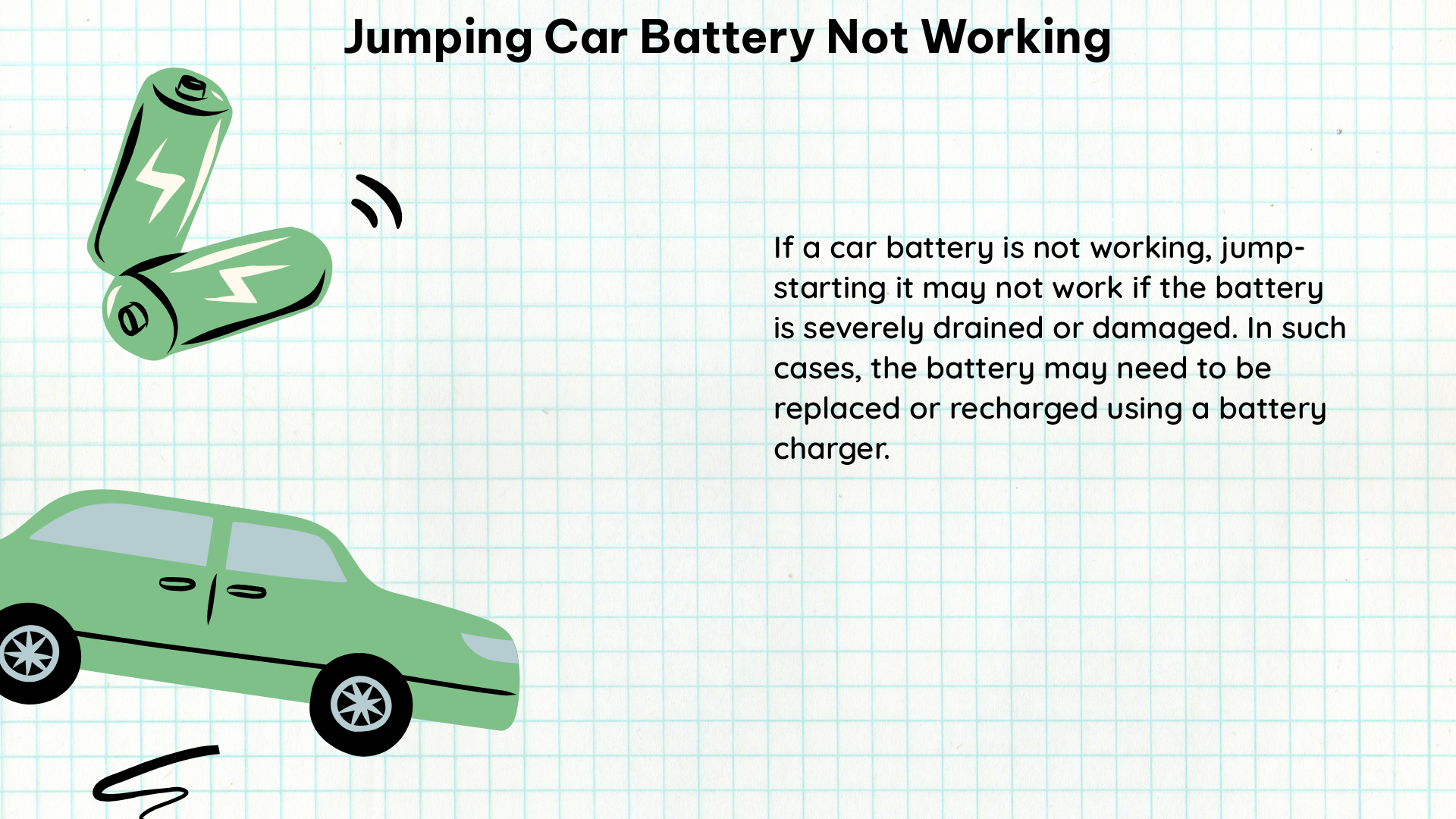Jumping a car with a dead battery involves connecting the dead battery to a good battery using jumper cables, allowing the dead battery to receive a charge and power the car’s starter motor. However, there are instances where jumping a car battery may not work, and understanding the reasons behind it requires measurable and quantifiable data.
Fully Charged Battery Voltage and Current Sourcing Capabilities
According to a post on Reddit, a car’s battery should have a voltage of 12.6 volts when fully charged. When starting a car, the battery supplies almost all of the current sourcing capabilities, which can be as high as 400-600 amps. If the dead battery is completely discharged, it may not accept a jump, and the car may not start.
Dead Cells, Blown Fuses, and Bad Power Connections

A post on JustAnswer suggests that dead cells in a battery can prevent it from accepting a jump. In such cases, a new 12-volt battery is recommended. The post also mentions that a blown fuse or a bad power connection from the battery to the power panel under the hood can prevent power from reaching the car’s accessories, causing starting problems.
Troubleshooting a Car That Won’t Start with a Jump
A discussion on Cartalk.com highlights the case of a car that wouldn’t start even with a jump. The battery was less than six months old, and there was no charge flowing into the car, even with the jumper pack attached. The problem was traced to a blown fuse or a bad power connection, and using a test light probe helped identify the issue.
Reasons Why Jumping a Car Battery May Not Work
In addition to these specific cases, there are general reasons why jumping a car battery may not work:
Bad or Damaged Battery
A defective or damaged battery may not hold a charge or may not supply enough power to start the car. Cold cranking amps (CCA) is a measurable indicator of a battery’s power, and it should be at least as high as the original battery’s CCA. A battery’s CCA decreases over time, and by the third year, it may have only 450 CCA compared to the original 650 CCA.
Loose or Corroded Battery Terminals
Loose or corroded battery terminals can disrupt the flow of electrical current to the starter, causing starting problems. Regularly checking and cleaning the battery terminals can prevent this issue. The resistance of a clean, tight battery terminal should be less than 0.5 ohms, while a corroded terminal can have a resistance of 1-2 ohms, significantly reducing the current flow.
Faulty Jumper Cables
Faulty or damaged jumper cables may not supply enough power to the dead battery, preventing the car from starting. It is essential to check the condition of the jumper cables before using them. Jumper cables should have a minimum gauge of 4 AWG and be at least 12 feet long to ensure sufficient current transfer.
Malfunctioning Neutral Safety Switch
A malfunctioning neutral safety switch can prevent the car from starting, even with a jump. The switch is designed to prevent the car from starting in gear, and if it malfunctions, it can prevent the car from starting altogether. The switch should be tested with a multimeter to ensure it is functioning correctly.
Failed Power Control Module
A failed power control module can prevent the car from starting, even with a jump. The module controls the flow of electrical current to the car’s accessories, and if it fails, it can prevent the car from starting. The module should be tested with a diagnostic tool to identify any issues.
Jumped Timing Belt
A jumped timing belt can cause starting problems, even with a jump. The timing belt synchronizes the engine’s movements, and if it jumps, it can cause the engine to misfire or not start at all. The timing belt should be inspected and replaced if necessary, following the manufacturer’s recommended service interval.
Diagnosing and Fixing a Car That Won’t Start with a Jump
To diagnose and fix a car that won’t start with a jump, it is essential to have a multimeter to measure the battery voltage and the voltage drop between the battery and the starter. A voltage drop test can help identify high resistance in the wire between the battery and the starter, preventing sufficient amps from getting to the starter. The voltage drop should be less than 0.5 volts for the car to start reliably.
Conclusion
Jumping a car battery not working can be due to various measurable and quantifiable reasons, including a dead or damaged battery, loose or corroded battery terminals, faulty jumper cables, a malfunctioning neutral safety switch, a failed power control module, or a jumped timing belt. Regularly checking and maintaining the battery and its terminals, using high-quality jumper cables, and diagnosing the problem with a multimeter can help prevent and fix jumping a car battery not working.
References:
– Reddit post on understanding a dead battery
– JustAnswer post on a vehicle with a dead battery
– Cartalk.com discussion on a car that won’t start with a jump
– Mechanics.stackexchange post on a car that won’t start unless using jumper cables
– CarParts.com blog on reasons why a car won’t start with a jump

The lambdageeks.com Core SME Team is a group of experienced subject matter experts from diverse scientific and technical fields including Physics, Chemistry, Technology,Electronics & Electrical Engineering, Automotive, Mechanical Engineering. Our team collaborates to create high-quality, well-researched articles on a wide range of science and technology topics for the lambdageeks.com website.
All Our Senior SME are having more than 7 Years of experience in the respective fields . They are either Working Industry Professionals or assocaited With different Universities. Refer Our Authors Page to get to know About our Core SMEs.